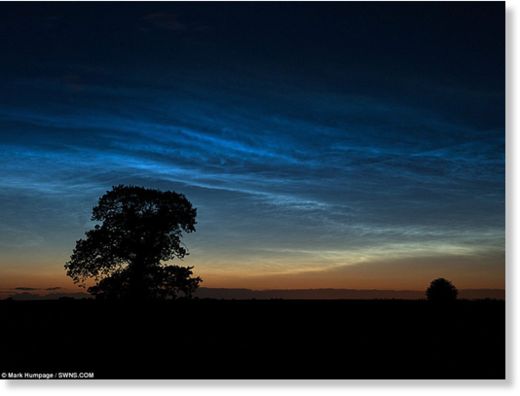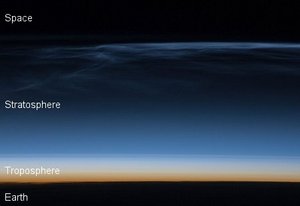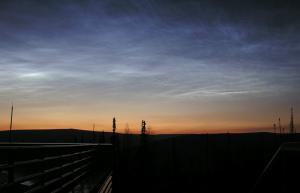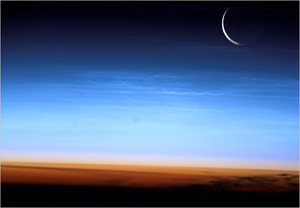
© Mark Humpage/ swns.com'Noctilucent' or 'night-shining' clouds form at the outer limits of the upper atmosphere and reflect the sun's light long after it has gone down over the horizon.
With the sun dappled across these white clouds and a deep blue sky, it appears dawn is about to break.
But this remarkable photograph of an English rural landscape near was taken at midnight and shows the rare phenomenon of 'night shining.'
The shimmering clouds form at an altitude of around 55 miles above sea level and are made up of tiny ice droplets. Because they are so high up in the atmosphere the sun is able to illuminate the clouds from below the horizon.
Called 'noctilucent' clouds, which literally means 'night-shining' in Latin, they are normally spotted in polar regions during the summer months.
But stunned residents spotted a rare glimpse of the clouds lighting up Leicester's skyline shortly after midnight on Thursday morning.
Comment: Notice the twist pointing once again to man-made global warming. However, a more plausible explanation is an increasing accumulation of cosmic dust at the highest altitudes. Especially disturbing is that the
composition of this dust suggest the earth is entering a debris-filled region of space, upping the odds of a catastrophic collision with extraterrestrial objects. We would recommend a careful reading of the Comets and Catastropes series, starting
here.









Comment: Notice the twist pointing once again to man-made global warming. However, a more plausible explanation is an increasing accumulation of cosmic dust at the highest altitudes. Especially disturbing is that the composition of this dust suggest the earth is entering a debris-filled region of space, upping the odds of a catastrophic collision with extraterrestrial objects. We would recommend a careful reading of the Comets and Catastropes series, starting here.